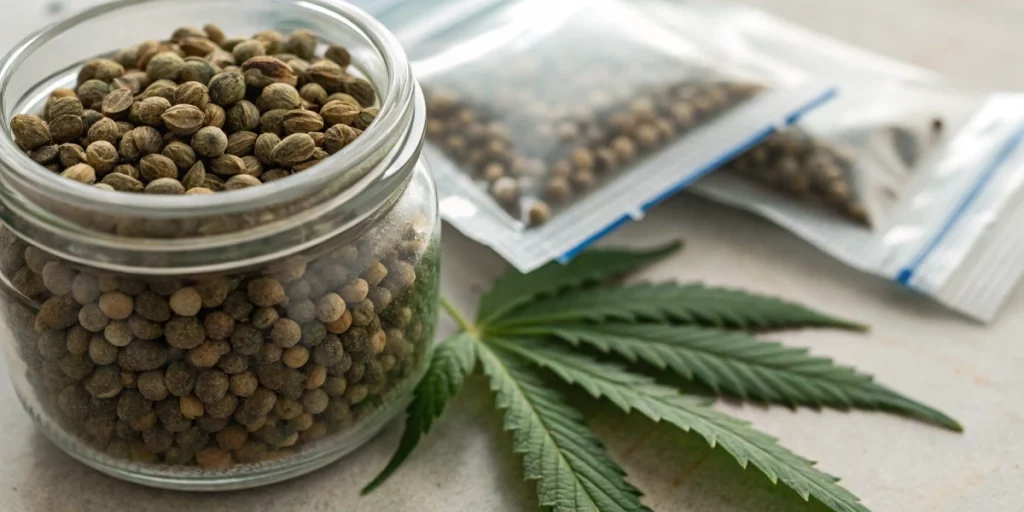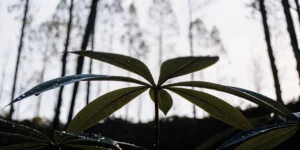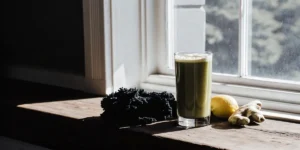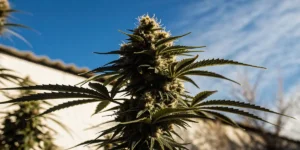Seed Viability Basics
What Affects Seed Health
Cannabis seeds depend on genetics, moisture levels, and temperature for peak health. Growers often focus on strain quality and storage conditions to extend viability. If seeds face sudden heat or cold spikes, their embryo can suffer damage. In addition, rough handling can crack shells and expose inner tissues. Regular quality checks help spot weak seeds early, improving overall crop yields. Maintaining stable conditions during harvest and packing keeps seeds vigorous and ready for germination.
External threats like pests, mold, and fungus can harm stored seeds. For example, insects may bore into shells and consume vital nutrients. Wet environments encourage fungal growth that degrades seed integrity. Even slight bruising during transport weakens seeds over time. Moreover, seeds harvested before full maturity tend to show reduced germination rates. By monitoring storage areas and inspecting seeds regularly, cultivators catch early signs of decay and preserve their collections.
Signs of Aging Seeds
Aging seeds often display cracks, shriveling, or uneven coloration on their shell surface. They lose their glossy finish and feel brittle to the touch. Many old seeds rattle inside their casing when gently shaken. You may spot small spots or patches that point to fungal colonization. By examining these details, growers decide whether to use or discard a batch based on visible deterioration.
Weak seeds also struggle during germination, showing delayed taproot emergence or irregular root growth. Seedlings sprouting from aged seeds often appear thin-stemmed with yellow-tinted leaves. Older seeds may fail to absorb water properly, which prolongs germination time. By noting these performance issues, cultivators adjust protocols or remove low-quality seeds from their stash before planting.
Testing Germination Rates
Growers perform germination tests to gauge seed viability accurately. First, place seeds on damp paper towels and fold them gently. Then seal the towels inside a zip-lock bag and keep them in a warm spot. After two or three days, check for tiny taproots emerging from the shells. Count the number of successful sprouts and divide by total seeds to calculate a percentage. Strains like Royal Creamatic Auto strain are known for high germination rates, making them a reliable choice for both beginners and experienced growers.
Analyzing these rates helps plan future grows effectively. Batches with ninety percent viability or higher earn prime planting spots. Rates between sixty and eighty percent require planting extra seeds to hit target plant counts. Anything below fifty percent proves unreliable for serious cultivation. Therefore, routine testing leads to smarter seed use and reduces the risk of crop failure.
Environmental Factors
Temperature Extremes
Excessive heat can damage the delicate embryo inside seeds. When temperatures exceed thirty degrees Celsius, the embryo can denature. Similarly, sudden cold snaps introduce frost crystals that rupture cell walls. Instead, cultivators aim for a consistent temperature around twenty-two degrees Celsius to maximize viability. By regulating heat, they maintain seed health throughout storage.
Frequent temperature swings also harm longevity. Moving seeds from a cool cellar into a warm room stresses their internal moisture balance. Moreover, repeated heating and cooling cycles accelerate oil oxidation within the shell. Therefore, storing seeds in a dedicated, climate-controlled container reduces sudden shifts and preserves germination potential.
Humidity and Mold Risk
High humidity invites mold growth that can destroy seeds within days. When relative humidity climbs above fifty percent, fungi thrive and colonize the seed coat. In addition, moist air alters internal moisture balance, causing seeds to swell and then crack. Growers monitor humidity with a reliable gauge inside storage containers. By keeping levels between five and fifteen percent, they limit mold threat and maintain dryness.
Too low humidity poses its own hazard. When seeds dry below five percent, they lose structural integrity and may crack under minor pressure. Rapid moisture loss reduces embryo viability and lowers germination rates. Therefore, growers aim for a balanced humidity range. They adjust conditions using desiccants or humidity packs to hit the ideal environment for long-term seed storage.
Light Exposure Effects
Direct sunlight can heat seeds and trigger premature aging. Ultraviolet rays break down protective pigments and oils inside the shell. If seeds absorb too much light, they lose dormancy and vitality faster. Therefore, growers store seeds in opaque containers or dark drawers to block light. Shielding seeds reduces internal damage and keeps vigor intact.
Even ambient light carries a small warming effect over time. Extended exposure to indoor lighting may gradually raise storage temperatures. In addition, fluctuations in light levels create microclimates inside loosely sealed jars. Growers use solid containers with tight lids to minimize light penetration and avoid energy shifts that harm seeds.
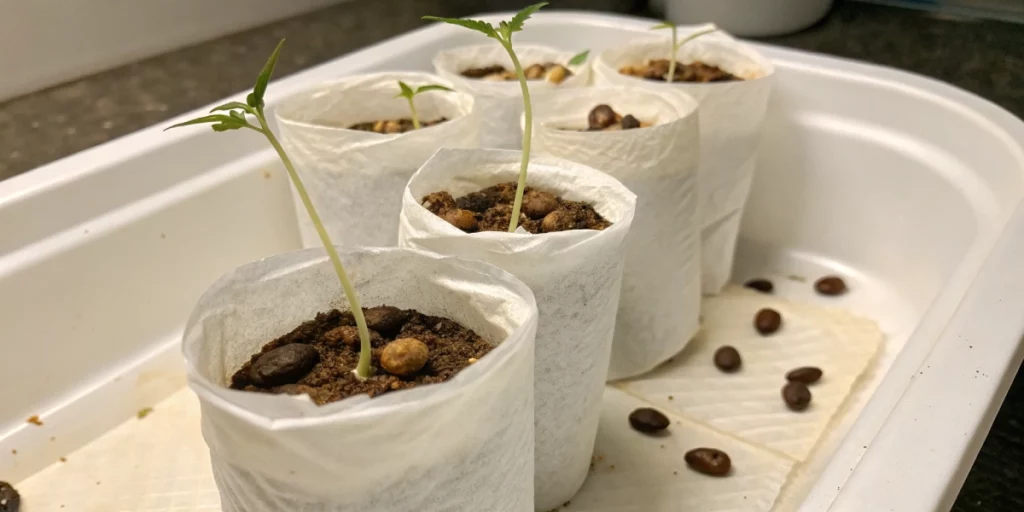
Storage Duration Expectations
Short-Term vs. Long-Term
Seeds stored for up to two years under stable conditions usually maintain high germination rates. During this period, cultivators notice minimal drop in viability if they keep seeds cool and dry. As long as temperatures stay below fifteen degrees Celsius and humidity remains low, seeds remain strong. By rotating stock each season, growers ensure fresh planting material for every grow cycle.
Long-term storage extends beyond five years and carries higher risk. Even under ideal conditions, seeds lose oil reserves and cellular integrity over extended periods. At year five, viability often drops to around fifty percent, depending on initial genetics and storage quality. Therefore, serious growers archive only their best genetics and review older seeds to decide if planting remains worthwhile.
Optimal Shelf Life
A typical batch enjoys an optimal shelf life of two to three years when stored properly. During this window, seeds combine sufficient dormancy with robust embryo health. To manage timing effectively, label all packages with harvest or purchase dates. By tracking each batch, growers use the oldest seeds first and limit aging before planting season.
In addition, storing backup seeds in a freezer at minus eighteen degrees Celsius offers extra security. Freezing extends shelf life beyond five years if temperatures remain constant. However, cultivators must prevent freezer burn by sealing seeds in moisture-proof bags with desiccant packs. This extra step keeps seed banks viable for future breeding or rare strain preservation.
When to Discard
Discard seeds that show below fifty percent germination during tests. Poor results indicate that planting will waste time and resources. Growers aiming for consistent yields remove underperforming batches to protect garden quality and avoid frustrating delays during germination.
Also toss seeds older than seven years unless they live in a lab-grade freezer. After this threshold, even top-quality genetics lose germination strength. Moreover, seeds that feel soft, damp, or discolored always earn a spot in the discard pile. Regularly weeding out weak seeds ensures a collection remains fresh and reliable.
Preventing Seed Degradation
Drying Before Storage
Proper drying reduces moisture content to safe levels. After harvest, place seeds in a well-ventilated area away from direct light. Using a small fan on low speed accelerates drying without overheating seeds. You want moisture around eight to ten percent to prevent sprouting or mold development. By measuring humidity inside your drying area, you achieve repeatable results every time.
Once seeds reach target moisture, move them quickly to storage containers. Delaying this step allows ambient humidity to creep back in. In addition, avoid drying seeds at high temperatures above twenty-eight degrees Celsius, which can kill embryos. With careful control of airflow and temperature, you lock in seed health before storage.
Seal and Protect Containers
Airtight jars or vacuum-sealed bags keep moisture and pests out. Choose glass or opaque containers with secure lids to block light and air. Before sealing, add a small humidity pack to achieve your target range. Then close the container firmly and shake gently to distribute the pack evenly. By using food-grade containers, you prevent leaks and maintain a stable environment.
Label each container with seed type and date for easy rotation. By tracking storage times, you place older samples at the front for earlier use. In addition, inspect containers periodically for cracks, rust, or loose fittings. If you notice any flaws, transfer seeds to fresh containers immediately. This attention to detail preserves batch quality and extends shelf life.
Use of Desiccants
Silica gel packs absorb excess moisture that threatens seed integrity. Place one or two small packs inside your storage container to maintain dryness. In addition, you can recharge reusable desiccants by heating them to drive out trapped water. Check packs every few months and replace or recharge as needed. Using this method, seeds stay within safe humidity limits.
Clay-based desiccants also offer a low-cost alternative. These packs absorb moisture steadily over long periods. However, they require replacement more often than silica gel. By combining different desiccant types, cultivators create a multi-layer defense against humidity spikes. This strategy keeps seeds protected and readiness high for future grows.
Reviving Older Seeds
Pre-soak Methods
Pre-soaking seeds in water softens the shell and kick-starts germination. Place seeds in a glass of room-temperature water for twelve to twenty-four hours. If you add a few drops of hydrogen peroxide, you reduce bacterial growth and boost oxygen availability. After soaking, seeds swell slightly, making them easier to crack during sprouting. This method suits batches showing low initial germination.
After soaking, transfer seeds to a damp paper towel or directly into growth medium. Avoid soaking longer than thirty hours, which risks rot or embryo suffocation. In addition, change soak water if it turns cloudy. By following these steps, growers give older seeds a fighting chance to sprout healthy roots under proper conditions.
Paper-towel Germination
Paper-towel germination remains a popular way to revive dormant seeds. Lay a folded towel on a tray, mist it with water, and arrange seeds evenly. Cover with a second moist towel and seal the tray under a humidity dome or inside a bag. Keep the setup in a dark, warm spot around twenty-five degrees Celsius. Check daily to maintain moisture and observe tiny taproots emerging.
Once roots reach two centimeters, handle each seed by its shell, not the root, and plant in soil or starter cubes. This careful transfer reduces shock and encourages steady growth. By using paper towels, you create a controlled environment that maximizes success for older seeds struggling to germinate.
Adjusting Growing Conditions
After sprouting, older seeds often need gentler conditions to thrive. Lower initial light intensity to prevent leaf burn on fragile seedlings. Use a humidity dome or clear cover to maintain high moisture around young roots. In addition, keep soil slightly warmer, around twenty-six degrees Celsius, to stimulate root development and compensate for slower starts.
As seedlings develop four to six leaves, gradually increase light strength and airflow. This gradual ramp-up helps older seeds catch up to younger batches in vigor. Moreover, feed seedlings with a mild nutrient solution at half strength to avoid burning delicate roots. By adjusting these factors, growers revive legacy seeds and achieve uniform, healthy plants.

FAQs about do cannabis seeds go bad
How long can I store seeds before they expire?
Most seeds remain viable for two to three years under proper storage conditions. By keeping them cool, dark, and dry, you can extend shelf life to five years. After that, viability drops significantly and you may see slow or uneven germination. Regular testing helps you identify when seed quality starts to decline and signals when to replace older batches.
Can low-germination seeds still grow?
Yes, seeds with germ rates between fifty and sixty percent can still produce plants, but you need to plant extra to reach target numbers. These seeds often yield weaker seedlings, so provide optimal care and monitoring. By using fresh growth medium and maintaining stable environmental conditions, you increase the odds that low-germination seeds reach maturity and deliver acceptable yields.
What tests reveal seed viability?
Germination tests on paper towels provide a direct measure of viability. Place seeds between wet towels in a sealed bag and count sprouts after two to three days. You can also use float tests, where viable seeds sink in water while non-viable seeds float. A X-ray inspection offers lab-grade analysis, but most home growers find towel tests both simple and reliable.

